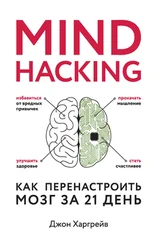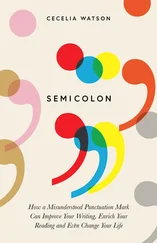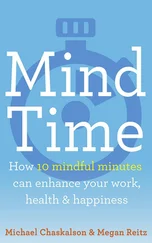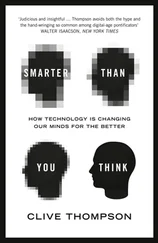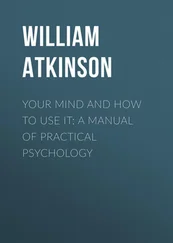Along the way, Peabody is teaching the alcoholic new habits of thought, cutting new mental grooves in the mind. He is also teaching various concentration and relaxation exercises, positive mental loops, and other techniques similar to the ones you’re learning in this book.
The Common Sense of Drinking was a great help to me as I was getting sober. I wasn’t the only one: the book also had a profound influence on another man, named Bill Wilson, who went on to help another alcoholic or two.
The Cocktail Napkin
It’s a classic Silicon Valley idea: two entrepreneurs are having drinks in a bar, and develop a business model so brilliant that they breathlessly scribble it out on a cocktail napkin. (A second cocktail napkin is usually used to draft up a quick NDA.) The “business on a cocktail napkin” meme is so popular because it boils this truth down to its essence: a good idea can only be developed if you write it down.
In practice, building a successful business is a little more complicated. Still, “writing it down” is a critical and surprisingly complicated discipline, as anyone who has ever tried to write a business plan can tell you.
As an entrepreneur, one of the most influential business books I’ve read is Michael E. Gerber’s The E-Myth Revisited: Why Most Small Businesses Don’t Work and What to Do About It , which has sold over a million copies worldwide. 9It outlines what Gerber calls the “Entrepreneurial Myth” that most new businesses are started not by entrepreneurs but by technicians who enjoy doing the work and want to work for themselves.
For example, a software developer decides he can make more money working as a hired gun than as a full-time employee, so he starts his own business. His skill set is programming, and that’s what he loves, so he starts out doing all the hands-on programming work himself. As the company grows, however, his bias toward working in the business will begin to overshadow what he should be doing: working on the business.
What Gerber recommends is for the entrepreneur to think of his or her business like a franchise operation. Imagine it as a fully contained system —like Edison’s R & D laboratory—that can be used to grow and expand to future locations. You probably know a small business that has stayed in the same place for years, never growing, making just enough for their owners to feed their families. Maybe it’s a local restaurant or a neighborhood dry cleaner. If the owner is able to shift his or her mental mind-set from This is my business to This is a prototype of my business , that can make all the difference.
One of the fundamental techniques Gerber recommends is writing it down . In other words, looking at every process and system within your business, and making it a replicable process that can be clearly written out, step by step, and put into a training manual that can be used to start a new office or store that is exactly like the original. Thinking in this way causes the entrepreneur to shift out of “working in the business” mode and get into “working on the business” mode.
Gerber’s advice is useful not just for small businesses and start-ups but also for mind hackers. Instead of just working in the mind, we are also working on the mind. We are looking not just at our thoughts but at the process of those thoughts, and how they affect our lives. Just like Gerber’s business owners, we must take the time to write down, step by step, what we want our minds to think, or we will be like the business owner who spends her entire life running to stay in the same place.
At my content marketing company, Media Shower, writing things down is what we do: a huge network of talented writers and editors create great content for our clients’ websites and blogs. Still, writing down our business processes is another matter entirely, and only through constant repetition have we been able to turn this into a healthy habit.
If we’re documenting how one of our editors should review a writer’s work, for example, we start out by writing down the process on a whiteboard, usually as a simple flowchart. Once we get basic agreement, we write up the process in an online document. The ground rules are:
• Keep it short.If it’s too long, no one will read it.
• Keep it simple.We do this for new employees, so anyone should be able to understand it.
• Keep it flexible.Things change, so anyone should be able to edit the document at any time.
At most companies I’ve seen, the “employee training manual”—if they have one at all—is an enormous three-ring binder, written a decade ago, full of procedures that no one actually follows, locked up in a middle manager’s closet under a bowling trophy. At Media Shower, it’s a collection of short, simple online documents that can evolve with our business. And when we no longer use a particular document, what do we do? We delete it .
The goal in writing things down is not to write everything down but to strive for the same level of economy and elegance as a well-written line of code. Scott Ambler, a proponent of agile development, argues that programmers should not focus huge amounts of time on writing documentation for their software but strive for documentation that’s “Just Barely Good Enough,” or JBGE. 10This does not mean ineffective or “not very good” but actually “the most effective possible,” as documentation that has just enough information is one that most people are actually likely to read .
In the spirit of JBGE, I’ll shut up now.
Don’t get it perfect;
Get it done.
The Two-Week Textbook
On a summer day in 1999, Allen Downey sat down in his office at Colby College and did something radical: he started to write a programming textbook.
There’s nothing radical about writing a college textbook, of course, provided you have several years, a team of peer reviewers, and a patient editor. Downey’s goal, however, was to get it written before class started . . . in two weeks .
“Most textbooks are unreadable, dense, and boring,” Downey told me, “thousand-page books with no personality.” There were plenty of textbooks available for his introductory course on the Java programming language, for example, but each chapter was typically fifty pages or more, and many students couldn’t slog through the reading. Worse, the material was poorly organized: the first few chapters were easy, but “then the trapdoor opened, and students fell through the floor.” 11
“Very predictably, in Chapter 5, I knew the students’ heads were going to explode,” he remembered. “There was too much, too new, too fast.” So, as he furiously developed his own textbook in that fourteen-day marathon, he took a different approach.
“I saw it like foldout bleachers,” he explained. “If you’ve got a difficult concept, it can either be a wall, or you can pull it out to allow the students to jump over it. So if I know there will be a wall in Chapter 5, I can pull some of that material forward, to give them a step up in Chapter 2, then another step in Chapter 3, so when I get to the hard part, they can get over it.”
Unbelievably, he finished the book in time for his first class, writing one ten-page chapter a day for thirteen straight days. 12“Part of that was accumulated frustration,” he laughed. “I knew exactly what I wanted by that point, so I could write it downvery quickly.” In the spirit of Just Barely Good Enough, he streamlined each chapter to ten pages, explaining each concept as simply as possible. And because he owned the textbook, he could now focus on making it better.
Читать дальше
![Джон Харгрейв Mind Hacking [How to Change Your Mind for Good in 21 Days] обложка книги](/books/404192/dzhon-hargrejv-mind-hacking-how-to-change-your-min-cover.webp)


